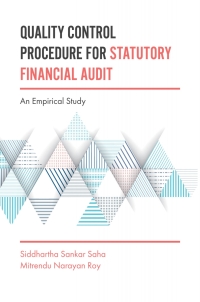Question
1. The senior manager is suspicious of a local manager's accounts and thinks that the profit performance may have been overstated. Which of the following
1. The senior manager is suspicious of a local manager's accounts and thinks that the profit performance may have been overstated. Which of the following would be a plausible explanation of an overstatement of profit?
A. Delaying payments to payables
B. Shortening the useful economic life of a non-current asset
C. Overstatement of a prepayment
D. Overstatement of an accrual
2. Which of the following statements regarding standard setting is correct?
A. Imposed standards are more likely to be achieved
B. Managers across the organisation should be targeted using the same standard
C. Standards should be set at an ideal level with no built in stretch
D. Participation in standard setting is more motivating than where standards are imposed
3. When considering setting standards for costing, which of the following would NOT be appropriate?
a. The normal level of activity should always be used for absorbing overheads.
b. Average prices for materials should be used, encompassing any discounts that are regularly available.
c. The labour rate used will be the highest level paid in the previous period.
d. Average material usage should be established based on generally- accepted working practices.
A a only
B b, c and d
C c only D
d only
4. Which of the following statements about standard costing is NOT true?
A. Standard costing is useful where products are non-standard or are customised to a customer's specifications.
B. Standard costing provides useful information to assist management in controlling costs. C. Standard costing makes it easier to value inventory.
D. Standard costing can be used to predict future costs and set budgets
5. Which of the following statements are true regarding ABC and cost drivers?
A. A cost driver is any factor that causes a change in the cost of an activity
B. For long term variable overhead costs, the cost driver will be the volume of activity
C. Traditional absorption costing tends to under-allocate overhead costs to low-volume products
6. In target costing, which of the following would be an appropriate strategy to reduce a cost gap for a product that existed in a competitive industry with demanding shareholders?
A. Increase the selling price
B. Reduce the expectation gap by reducing the selling price
C. Reducing the desired margin of the product
D. Mechanising production in order to reduce average production cost
7. A company uses an activity-based costing system to attribute overhead costs to its three products. The following budget data relates to this year:
Product X Y Z Production (units) 50,000 25,000 20,000 Batch size 250, 100,400 Material handling costs are determined by the number of batches of each product and have been estimated to be 60,000 per year.
What is the cost driver for material handling costs?
Step by Step Solution
There are 3 Steps involved in it
Step: 1

Get Instant Access to Expert-Tailored Solutions
See step-by-step solutions with expert insights and AI powered tools for academic success
Step: 2

Step: 3

Ace Your Homework with AI
Get the answers you need in no time with our AI-driven, step-by-step assistance
Get Started


